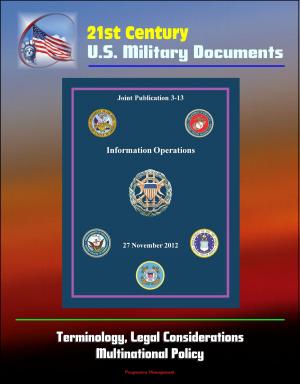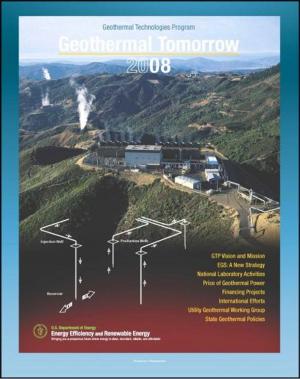2020-2040 U.S. Army Operating Concept (AOC): Win in a Complex World - How Future Army Forces Prevent Conflict, Win Wars, Shape Security Environments, Tenets and Core Competencies
Nonfiction, History, Military, Strategy| Author: | Progressive Management | ISBN: | 9781310514494 |
| Publisher: | Progressive Management | Publication: | November 21, 2014 |
| Imprint: | Smashwords Edition | Language: | English |
| Author: | Progressive Management |
| ISBN: | 9781310514494 |
| Publisher: | Progressive Management |
| Publication: | November 21, 2014 |
| Imprint: | Smashwords Edition |
| Language: | English |
The Army Operating Concept (AOC) describes how future Army forces will prevent conflict, shape security environments, and win wars while operating as part of our Joint Force and working with multiple partners. The AOC guides future force development by identifying first order capabilities that the Army needs to support U.S. policy objectives. It provides the intellectual foundation and framework for learning and for applying what we learn to future force development under Force 2025 and Beyond.
The title, Win in a Complex World, emphasizes ready land forces' importance for protecting our nation and securing our vital interests against determined, elusive, and increasingly capable enemies. While the concept underscores the foundational capabilities the Army needs to prevent wars and shape security environments, it also recognizes that to deter enemies, reassure allies, and influence neutrals the Army must conduct sophisticated expeditionary maneuver and joint combined arms operations.
The AOC's vision of future armed conflict considers both continuities in war's nature and changes in its character. Conflicts in the future, like those in the past, will ultimately be resolved on land. Hence the concept recognizes that Army forces will be essential components of joint operations to create sustainable political outcomes while defeating enemies and adversaries who will challenge U.S. advantages in all domains: land, air, maritime, space, and cyberspace. Joint operations are critical to cope with such complexity, and the Army's contribution must provide unique capabilities and multiple options to the President, Secretary of Defense, and Combatant Commanders. These capabilities include tailorable and scalable combinations of special operations and conventional forces, regionally aligned and globally responsive combined arms teams, and foundational theater capabilities to enable joint operations. To do this, innovation is critical, both for the operational and the institutional Army, and the AOC is a beginning point for the innovation we need to ensure that our Soldiers, leaders, and teams are prepared to win in a complex world.
The Army Operating Concept (AOC) describes how future Army forces will prevent conflict, shape security environments, and win wars while operating as part of our Joint Force and working with multiple partners. The AOC guides future force development by identifying first order capabilities that the Army needs to support U.S. policy objectives. It provides the intellectual foundation and framework for learning and for applying what we learn to future force development under Force 2025 and Beyond.
The title, Win in a Complex World, emphasizes ready land forces' importance for protecting our nation and securing our vital interests against determined, elusive, and increasingly capable enemies. While the concept underscores the foundational capabilities the Army needs to prevent wars and shape security environments, it also recognizes that to deter enemies, reassure allies, and influence neutrals the Army must conduct sophisticated expeditionary maneuver and joint combined arms operations.
The AOC's vision of future armed conflict considers both continuities in war's nature and changes in its character. Conflicts in the future, like those in the past, will ultimately be resolved on land. Hence the concept recognizes that Army forces will be essential components of joint operations to create sustainable political outcomes while defeating enemies and adversaries who will challenge U.S. advantages in all domains: land, air, maritime, space, and cyberspace. Joint operations are critical to cope with such complexity, and the Army's contribution must provide unique capabilities and multiple options to the President, Secretary of Defense, and Combatant Commanders. These capabilities include tailorable and scalable combinations of special operations and conventional forces, regionally aligned and globally responsive combined arms teams, and foundational theater capabilities to enable joint operations. To do this, innovation is critical, both for the operational and the institutional Army, and the AOC is a beginning point for the innovation we need to ensure that our Soldiers, leaders, and teams are prepared to win in a complex world.















